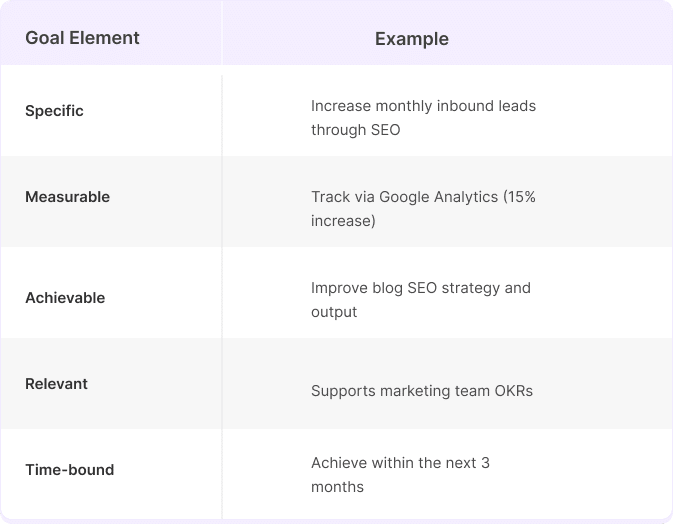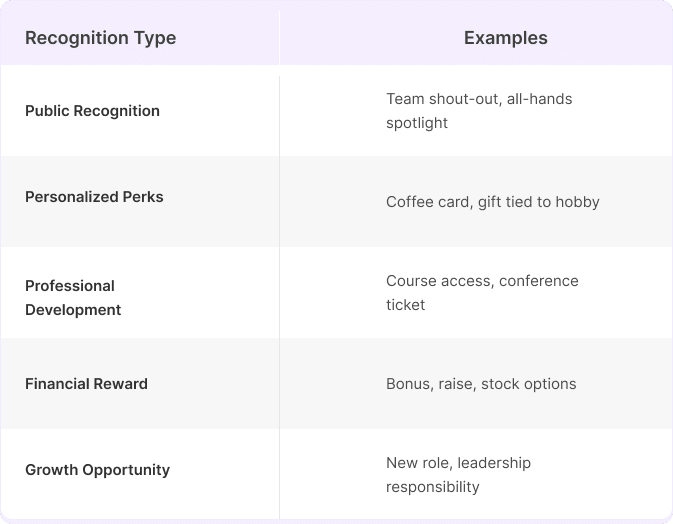Performance management shouldn’t feel like a rushed meeting at the end of the year but in many companies, it still does. Feedback is spotty, goals aren’t clear, and development plans get lost. As a result, top talent loses interest, poor performance goes unchecked, and managers are left without a clear path forward.
The expectation is clear: managers should keep teams aligned, motivated, and continuously improving. But without a defined performance management process, it’s like coaching with no playbook. Talks become reactive, HR focuses on forms not results, and growth happens by chance instead of on purpose.
That’s where a modern performance management system comes in. It creates structure without slowing teams down. It brings clarity for managers, direction for employees, and real-time alignment for the entire business. More than a tool, it becomes a rhythm that drives accountability, development, and meaningful results.
What Is the Performance Management Process?
It’s a structured, ongoing approach to help individuals and teams achieve their best through clear goals, continuous feedback, and purposeful development.
This guide explains each step with real examples, common problems, and easy solutions.
Chronological Flow of the Employee Performance Review Cycle
Understanding the key stages and responsibilities behind an effective performance review process.
| Step | Name | Who Initiates | Who Executes | Tool’s Role | Outcome | Optional / Necessary |
| 1 | Review Cycle Planning | HR | HR | Define timeline, stakeholders, eligibility | Aligned calendar, clarity across org | Necessary |
| 2 | Policy Alignment & Communication | HR + Leadership | HR | Sends org-wide guidance | Clear expectations, fairness | Necessary |
| 3 | Training Managers & Employees | HR | HR | Hosts sessions, shares guides | Process readiness, better quality inputs | Optional but Highly Recommended |
| 4 | Goal/OKR Setting | Manager / Employee | Both | Alignment, progress tracking | Shared performance benchmarks | Necessary |
| 5 | Mid-Cycle Check-ins | Manager / Employee | Both | Track check-in history, capture blockers | Early course-corrections | Optional but Ideal |
| 6 | Continuous Feedback Collection | Manager / Peers | Peers, skip-levels | Feedback logs, templates | Well-rounded input | Optional |
| 7 | Self Review | HR triggers | Employee | Structured questions/forms | Employee’s perspective | Necessary |
| 8 | Peer Review / Upward Feedback | HR or Manager | Peers / Direct Reports | 360° feedback tools | Input on collaboration, leadership | Optional but Valuable |
| 9 | Manager Review | HR or Tool | Manager | Prompts, past data visibility | Manager’s evaluation | Necessary |
| 10 | Skip-level Review (if needed) | HR / Senior Leader | Senior Manager | Context from indirect managers | Added validation | Optional |
| 11 | Calibration | HR | Leadership+ Managers | Normalize ratings, detect bias | Fairness across teams | Optional but Critical in larger orgs |
| 12 | Finalization of Scores & Ratings | HR | Managers + HR | Rating workflows, tracking | Final performance decisions | Necessary |
| 13 | 1:1 Review Meeting | Manager | Manager + Employee | Summarize goals, feedback, plan | Shared understanding | Necessary |
| 14 | Appraisal & Promotion Decision | HR / Leadership | HR + Leadership | Tie ratings to bands, policies | Salary, bonus, level change | Optional (but Common) |
| 15 | Performance Improvement Plans (PIPs) | Manager / HR | Manager + Employee | Structured PIP tracking | Plan for underperformance | Optional – Case-based |
| 16 | Development & Growth Planning | Manager / Employee | Both | Set post-review development goals | Future-focused growth path | Necessary |
| 17 | Org-wide Review Insights & Reporting | HR | HR | Dashboards, trend reports | Strategic talent decisions | Necessary |
| 18 | Review Process Feedback Collection | HR | All employees | Post-cycle surveys | Process improvement | Optional but Best Practice |
| 19 | Cycle Closure & Next Steps Communication | HR | HR | Share what’s next, upcoming goals | Alignment on next period | Necessary |
To ensure a smooth and efficient process, begin by establishing a clear vision and understanding of the objectives ahead.
Step 1: Planning: Set the Stage for Clarity and Alignment
Planning is where performance management begins. It’s about setting clear goals, matching roles to business needs, and creating focused development plans.This ensures employees know exactly how their performance will be evaluated.
It’s also the ideal time to set development goals—like learning new skills or taking on stretch projects—aligned with company objectives. These goals keep employees motivated and help managers guide them to grow beyond their basic job duties.
- Define Measurable Goals:
Vague goals like “do better” leave too much room for interpretation. Clear, SMART goals (e.g., “Increase monthly sales by 10% over last quarter”) give employees direction and motivation.
- Establish Expectations:
Set clear responsibilities and standards early. For example, a project manager’s role could be to “make timelines” and “update stakeholders.”
- Collaborate on IDPs or PIPs:
When needed, create personalized development or improvement plans. If time management is a challenge, include tactics like calendar blocking or workshops.
- Align Goals with Business Objectives:
Employees should know how their work ladders up. For example, if a company wants to expand to new markets, a research goal tied to that strategy makes individual effort feel purposeful.
| SMART Goals Template SMART goals help both managers and employees define what success looks like. They ensure everyone’s working toward outcomes that are specific, measurable, achievable, relevant, and time-bound. Here’s a quick template you can use to set goals that actually move the needle: |

Step 2: Coaching: Drive Continuous Feedback and Development
Development isn’t just for addressing gaps—it’s also about growing strengths. Effective performance management is built on ongoing conversations, not annual check-ins. Coaching keeps expectations on track and growth on the table.
Managers can support this through upskilling, mentorship, peer coaching, or team challenges. Even small efforts like lunch-and-learns can boost engagement and help employees grow in their roles.
- Enable Two-Way Feedback:
Regular 1:1s give space for feedback in both directions. A weekly check-in to discuss wins, challenges, and priorities can surface concerns before they become issues.
- Address Skill Gaps:
Identify gaps early and connect them to learning opportunities. A marketer struggling with campaign analytics might benefit from a Google Analytics course.
- Clarify Performance Standards:
Set clear standards so employees know what’s expected (e.g., “Respond to customer tickets within 24 hours” in support roles).
- Encourage Collaboration:
Break silos. Joint sessions between developers and QA teams can improve communication and accelerate releases.
You may also find this helpful: Performance Coaching Guide for Managers
Step 3: Monitoring: Track Progress and Adapt Proactively
Once goals are set, the focus shifts to implementation and active monitoring. Managers should track progress, give ongoing feedback, and address issues early. Weekly 1:1s are key—they provide space to align on goals, share feedback, and remove blockers. These check-ins should center on coaching, not micromanaging.
- Use Regular Check-ins:
Weekly check-ins or team standups help track progress and spot problems early.
- Leverage Data and KPIs:
Monitor quantifiable metrics like NPS, response times, or sales volume to remove guesswork.
- Deliver Balanced Feedback:
Combine praise with constructive input. For example, recognize great customer engagement while coaching on closing deals.
- Encourage Employee Input:
Make monitoring collaborative. Let employees share what’s working and where they need support.
- Be Proactive, Not Reactive:
Don’t wait for issues to escalate. Look for patterns in incident reports or project delays and act early.
- Reinforce Positive Progress:
Recognition isn’t only for milestones. Small wins deserve a spotlight too.
Step 4: Reviewing: Evaluate, Adjust, and Realign
The evaluation phase is a chance to reflect, reset, and realign. A structured review process ensures clarity, recognizes high performers, and addresses gaps.
Clear communication reduces surprises, while tools like 360-degree feedback help minimize bias by incorporating peer insights for a fairer, well-rounded assessment.
- Schedule Regular Evaluations:
Whether quarterly or annually, reviews provide checkpoints that teams can count on.
- Assess Against Goals:
Compare outcomes to objectives. Did the employee hit their targets? Where did they exceed? Where’s the gap?
- Balance Strengths and Improvements:
Highlight achievements alongside development areas. This supports morale and learning.
- Adjust Future Goals:
If someone consistently outperforms, raise the bar. If they struggle, reset goals to be achievable but challenging.
- Evaluate the Process Itself:
Check if the performance management system is working. Is it easy to use? Are people engaged? Gather feedback and iterate.
- Offer Actionable Insights:
Change vague goals like “improve communication” to clear actions, like “attend a workshop and apply it in meetings.”
You may also find this helpful: Performance Evaluation Methods
Step 5: Acting on Insights: Recognize, Reward, and Resolve
Recognizing great work is a vital final step in the performance cycle. It boosts motivation, engagement, and retention—yet many employees still feel overlooked.
Good ways to celebrate wins include recognition, rewards, growth opportunities, bonuses, or promotions. Tailoring recognition to the level of achievement makes it even more meaningful.
- Recognize High Performance:
Shout out top performers with awards, team meetings, or internal comms. Recognition boosts motivation and retention.
- Motivate and Retain Talent:
Give top performers new challenges, bonuses, or bigger roles to show appreciation and build loyalty.
- Address Underperformance Promptly:
Have honest conversations backed by data. Set expectations clearly and follow up with support.
- Implement PIPs When Needed:
Improvement plans should include timelines, check-ins, and support to give employees a fair chance to improve.
- Document Everything:
Keep track of conversations, plans, and outcomes. Documentation ensures transparency and protects both the employee and organization.
| Recognition Ideas Menu Template Use the menu below to tier recognition based on contribution and context. Whether you’re celebrating consistent effort or breakthrough results, meaningful rewards show your team that their work matters. |

With the right system in place, managers lead better, employees feel more supported, and teams stay aligned on what matters most.
How Performance Reviews Actually Work: A Step-by-Step Breakdown
1. Goal Setting / OKR Alignment
This is the foundation. Employees, with their managers, define clear goals or OKRs (Objectives & Key Results) aligned with team and company objectives. This sets expectations and provides a north star for measuring performance.
| Who drives it: | Why it matters: |
| Initiated by HR, executed by managers and employees. | This gives everyone a clear direction. Without clear goals, performance can’t be measured objectively. |
2. Mid-Cycle Check-ins
Informal catch-ups (monthly or quarterly) to track progress, remove blockers, and make course corrections. These help ensure goals stay relevant and achievable. It’s more about support than judgment.
| Who drives it: | Why it matters: |
| Usually initiated by managers, but can be led by employees too. | Helps course-correct before it’s too late. Shows ongoing support instead of a once-a-year judgment. |
3. Review Cycle Kickoff
This is the formal “go” signal from HR. Communication goes out with timelines, guidelines, and tool access. It creates structure and accountability, signaling everyone that the performance review season has begun.
| Who drives it: | Why it matters: |
| Fully owned by HR. | Keeps the process structured and ensures everyone knows what’s expected and by when. |
4. Self-Review
Employees reflect on their own performance: what went well, what could be improved, how they performed against goals, and what support they need going forward. It encourages ownership and helps managers understand the employee’s POV.
| Who drives it: | Why it matters: |
| Completed by employees. | Provides personal perspective, encourages self-awareness, and helps managers see blind spots or unnoticed wins. |
5. Manager Review
Managers evaluate the employee’s performance—against goals, behavior expectations, and team contributions. This is the most critical input in the review cycle, as it drives calibration, compensation, and development outcomes.
| Who drives it: | Why it matters: |
| Led entirely by managers. | Manager feedback is the core of performance evaluation. It often determines promotions, raises, and growth paths. |
6. Peer / Upward Feedback
Also called 360-degree feedback, this captures input from colleagues or even direct reports. It helps surface behaviors, collaboration style, and blind spots that a manager might not see.
| Who drives it: | Why it matters: |
| HR facilitates, but employees/managers select reviewers. | Brings multiple perspectives, especially in cross-functional roles or team-based projects. |
7. Calibration
A behind-the-scenes meeting where managers align on performance ratings across teams to ensure fairness and reduce bias. This prevents situations like one manager rating strictly while another inflates ratings.
| Who drives it: | Why it matters: |
| HR and leadership teams coordinate this. | Prevents inflation or favoritism in ratings. Ensures fairness across departments. |
8. Performance Review Meeting (1:1)
A face-to-face or virtual conversation where the manager shares the review, discusses strengths, areas of improvement, and answers any questions. It should feel like a conversation, not a verdict.
| Who drives it: | Why it matters: |
| Manager schedules and leads, employees participate. | This is where real impact happens. It’s about clarity, support, and setting up future success. |
9. Documentation / System Finalization
Once discussions are done, final ratings and comments are submitted in the HR system. This creates a performance record used for comp planning, promotions, and internal mobility.
| Who drives it: | Why it matters: |
| HR + Managers | Creates an official record for tracking growth, promotions, and future decisions. |
10. Compensation & Promotion Decisions
Review outcomes often inform raises, bonuses, and promotions. High performers may be rewarded or fast-tracked, while others may get support plans or stretch goals.
| Who drives it: | Why it matters: |
| HR + Leadership make the final call. | Performance reviews should connect directly to rewards and recognition to keep employees motivated. |
11. Development Plan / IDPs (Individual Development Plans)
This is the “what’s next” moment. Managers and employees agree on learning goals, stretch projects, or mentoring plans. It’s key for career growth and engagement.
| Who drives it: | Why it matters: |
| Manager + Employee together. | Turn feedback into action. Shows that the company invests in the employee’s growth. |
12. Feedback Loop to HR
Post-cycle, employees and managers can give feedback on the review process—what worked, what didn’t. HR uses this to refine the next review cycle.
| Who drives it: | Why it matters: |
| Employees and Managers submit; HR collects and acts. | Helps HR improve the review experience over time. |
Why Performance Management Matters Now More Than Ever
Clarity for Managers – Know who’s excelling, who needs support, and where the team stands overall.
Direction for Employees – Give people purpose, growth paths, and honest, timely feedback.
Better Talent Decisions – Use performance data to guide promotions, training, and succession.
Culture of Accountability – Regular talks help teams stay responsible and keep standards high.
Key Features of Effective Performance Management Software
When choosing performance management software, it’s important to look for features that support clarity, consistency, and impact. Here are the essentials:
- Customization: The platform should fit your needs, not a one-size-fits-all model.
- Transparency: It should make the process clear, keeping managers and employees aligned.
- Objectivity: The system should offer data and clear criteria for fair, consistent reviews.
- Real-Time Feedback: Choose tools for ongoing feedback and regular check-ins, not just yearly reviews.
10 Tips to Improve the Performance Management Process
Improving your performance management process isn’t just about changing tools — it’s about changing mindsets. Here are 10 simple points to improve results for managers, employees, and the company.
1. Start with One Department
2. Leverage Technology for Goal Alignment
3. Connect Continuous Feedback to End-of-Year Reviews
4. Keep Goal-Setting Simple
5. Listen and Measure What Matters
6. Use Tech to Flag Risks Early
7. Think Beyond Performance Reviews
8. Train Managers — and Empower Them
9. Link Performance to Recognition
10. Keep Improving — Always
Ready to Upgrade Performance Without the Chaos?
A great performance management process is more than reviews — it’s a continuous cycle of goal setting, feedback, coaching, and recognition. But managing it all manually? That’s where things break down.
Peoplebox.ai simplifies performance management by bringing everything into one system. It helps managers and employees stay on track with check-ins, reviews, and goal tracking.
Great teams aren’t built on gut feelings. They’re built on skills, clarity, and growth. A modern performance system helps managers see progress and gives employees clear direction.
It’s not just about tracking what people can do — it’s about unlocking what they could do next.
Why Peoplebox.ai:
- Built-in goal tracking and check-ins to keep performance conversations continuous.
- Slack and HRIS integration for a frictionless experience in tools your teams already use.
- Real-time analytics to uncover trends and make data-driven decisions.
- Fully customizable to reflect your performance philosophy, not force a one-size-fits-all.
- Backed by a dedicated support team to ensure a smooth rollout and sustained success.
Whether you’re starting fresh or improving, Peoplebox.ai helps you turn performance into progress.
Request your free demo and experience what next-level performance management looks like.








